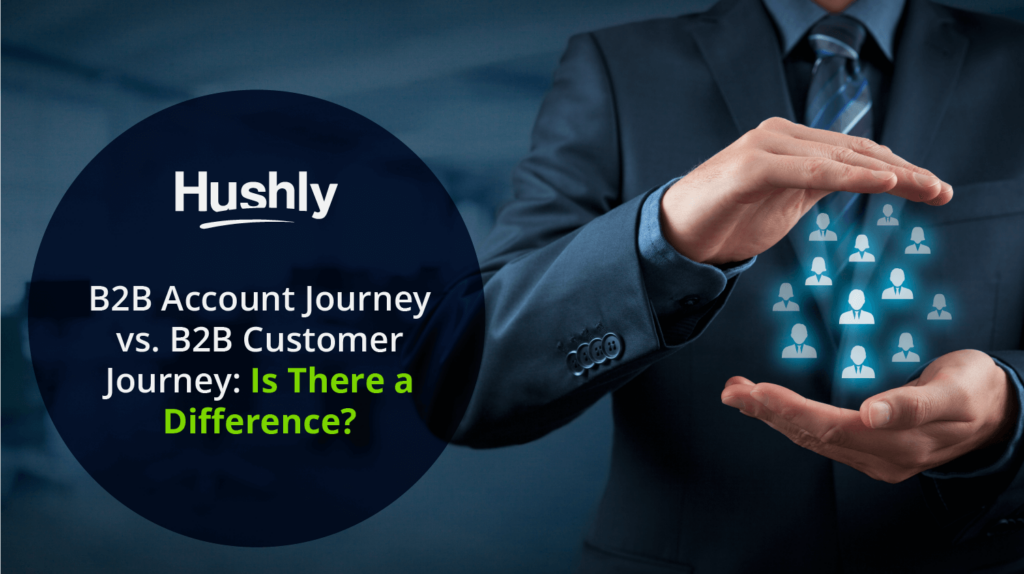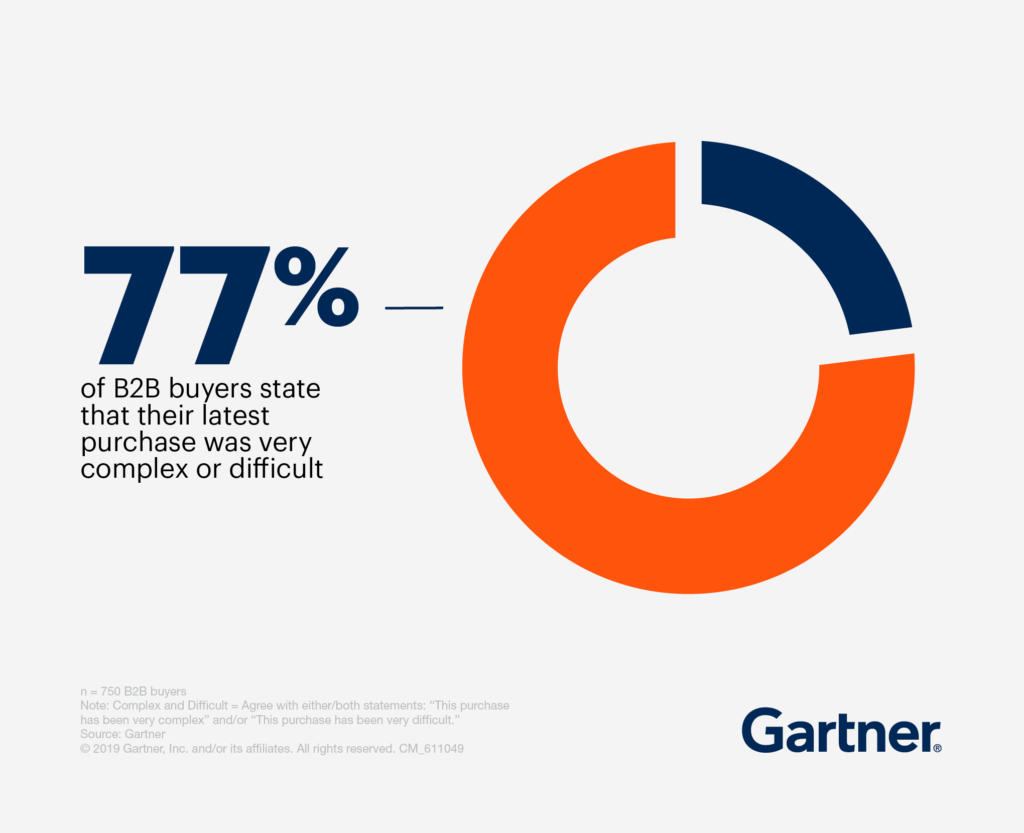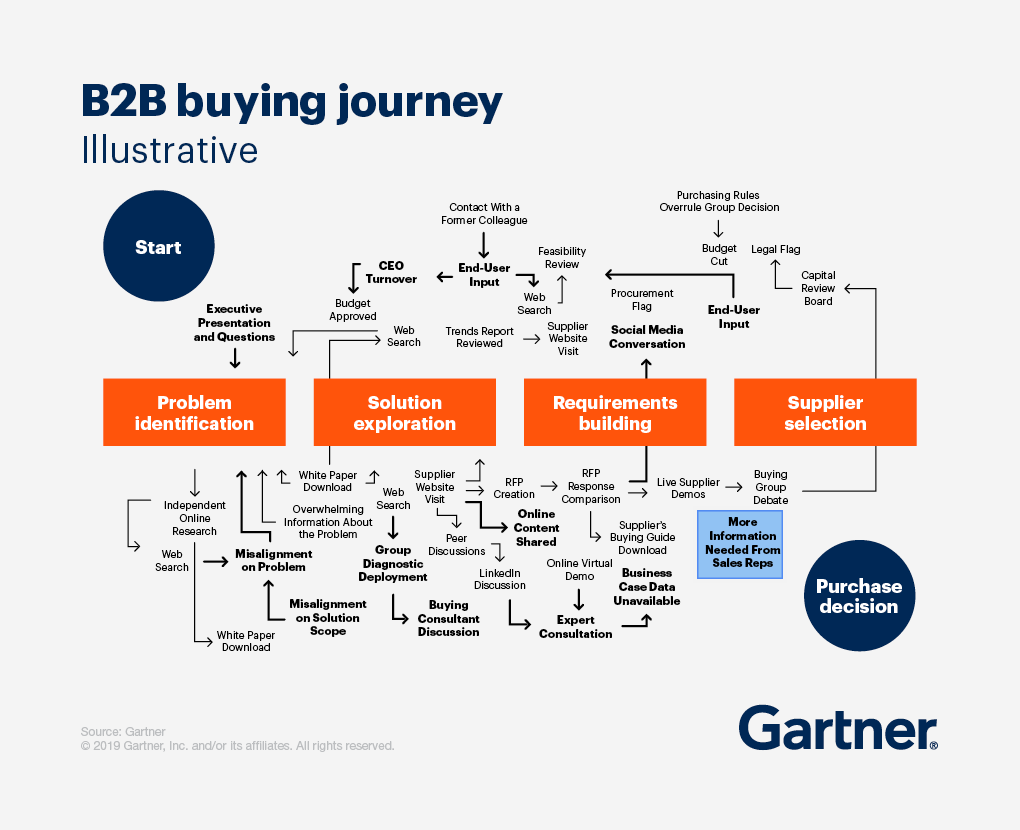With the recent explosion in the discussion of both account-based marketing (ABM) and account-based experiences (ABX), a new debate has emerged: is there a difference between a B2B account journey vs. a B2B customer journey?
Currently, the terms are used interchangeably. However, there is a subtle but essential distinction between the two.

The Difference Between a B2B Customer and a B2B Account
In business, a customer is a customer – right?
Well, not exactly.
With the boom of account-based marketing and creating the ultimate account-based experience, distinguishing between customers and accounts becomes even more critical.
A B2B Customer
A B2B customer is typically defined as an individual who purchases goods or services from another business. This can be either an individual person making a purchase for their own small business or even a specific person who is in charge of making a purchase for a company to be used across multiple users within an organization.
Up until recently, this was the individual that you would be addressing throughout the entire process. However, as times have changed, you’ll notice that you probably aren’t dealing with a single individual anymore. Instead, you’re likely dealing with a collection of individuals who are all involved in the buying cycle and responsible for making a final case to the ultimate decision-maker.
Studies show that when it comes to a B2B purchase, the process has become increasingly challenging because there are anywhere between six to 10 people involved in making the purchasing decision – or at least involved in presenting the case to a single decision-maker.

Source: Gartner
This means you are no longer dealing with a singular customer, but an account of multiple individuals.
A B2B Account
Where a B2B customer meant meeting the needs of a single individual, a B2B account now requires you to meet the needs of a group of people that make up a single organization.
An account is a collection of people within a single organization responsible for making decisions on behalf of that organization when it comes to a specific product or service.
This shift away from a singular mentality to a more group-oriented one is essential because it changes the way you are supposed to interact with the buyer. Instead of approaching a single decision-maker, your goal is to build relationships with a group of people responsible for making the purchasing decision.
You now must build a case that will resonate with this entire group and demonstrate why your product is the best choice for their organization. This is where the distinction between a B2B account journey vs. a B2B customer journey comes into play.
What A B2B Account Journey Looks Like
When it comes down to discussing the difference between a B2B account journey and a B2B customer journey, you need to understand that a B2B account journey is much more complex than a B2B customer journey.
While a customer journey can be quite complex, a B2B account journey gets more complicated with multiple people involved in a single organization. This means that instead of simply meeting the needs of a single person, you have to build relationships with a collection of people. This requires a different strategy than what you would use when building a relationship with a single person.
A standard B2B account journey may look a little something like this:

Source: Hushly
It doesn’t look too complicated – right? Well, when you start to factor in the multiple individuals that need to be addressed, this simple format can end up looking something like this:

Source: Gartner
The good news? Developing a B2B account journey isn’t nearly as daunting as you may think.
Things to Consider When Developing Your B2B Account Journey
The first step is identifying the account and who’s involved. This will help you understand the scope of what you’re dealing with and who needs to be addressed. Identifying key influencers within the account will allow you to build relationships with the right people. This will make it easier for you to build a case and demonstrate the value your product or service brings to the table.
From there, you’ll want to take the time to understand the needs of each of the key influencers and how you can best meet them. Each of the key influencers will have a different set of needs, so it’s essential that you take the time to identify these needs and create or curate content and other resources to help properly educate them on what you have to offer.
If you haven’t yet, you need to start deepening your conversation and having more meaningful interactions with these influencers to determine their ultimate goals. You need to take the time to ask questions and listen to their comments and concerns to develop a strategy that will address those needs and help them see just how you can help them reach their goals.
From there, it’s time to start developing your case. This isn’t something that can be done overnight, so it’s essential that you take the time to develop your content and continue to build your case as you learn more about the needs of the key influencers in your account.
Finally, you’ll want to understand their timeline and how you can work with it to have the most significant impact. This will help you identify when and where you should be engaging with each person.
Optimize Your ABM Strategy with Hushly’s ABX Solutions
When it comes to developing a B2B account strategy, you have a lot of different options. One of the most effective ways to build a successful campaign is to optimize your account-based marketing strategy using ABX solutions.
This will help you ensure that you’re making the most of your interactions with the key influencers in your account and developing a strong case for how your product or service can help them achieve their goals and achieve success.
Ready to make the most of your ABM strategy? Check out our range of account-based experience solutions today!

